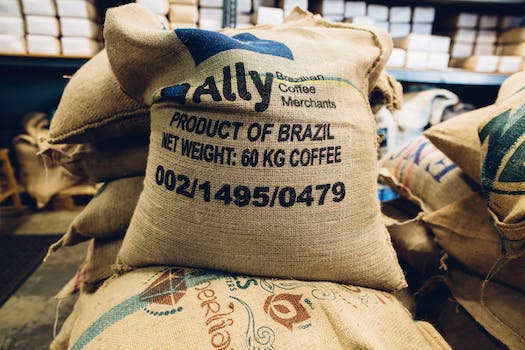How To Make Money Selling Nfts
“Unlock the potential of your digital art with NFTs and turn creativity into profit.”
Introduction
NFTs, or non-fungible tokens, have become a popular way for artists, musicians, and other creators to monetize their digital content. These unique digital assets are stored on a blockchain and can be bought and sold like any other asset. If you’re interested in making money selling NFTs, there are a few key steps you can take to get started.
Maximizing Profits: Tips for Pricing Your NFTs
If you’re looking to make some extra cash, selling NFTs (non-fungible tokens) can be a great way to do it. NFTs are unique digital assets that can be bought and sold on blockchain platforms. They can be anything from digital art to music to virtual real estate. But how do you price your NFTs to maximize your profits? Here are some tips to help you out.
First, do your research. Look at what similar NFTs are selling for on the market. This will give you an idea of what people are willing to pay for your NFT. You can use websites like OpenSea or Nifty Gateway to see what’s selling and for how much. Keep in mind that the market can be volatile, so prices can fluctuate quickly.
Next, consider the rarity and uniqueness of your NFT. The more unique and rare your NFT is, the more valuable it will be. If you’re selling a one-of-a-kind piece of digital art, for example, you can price it higher than something that has multiple copies available. You can also consider adding special features or bonuses to your NFT to make it more valuable, such as access to exclusive content or a physical item.
Another factor to consider is the artist or creator behind the NFT. If you have a well-known artist or celebrity creating NFTs, they can command higher prices due to their reputation and fanbase. On the other hand, if you’re just starting out, you may need to price your NFTs lower to attract buyers and build your reputation.
When pricing your NFT, it’s important to consider the fees associated with selling on blockchain platforms. These fees can vary depending on the platform, but they typically include a gas fee (a fee for processing transactions on the blockchain) and a platform fee (a percentage of the sale price). Make sure to factor these fees into your pricing strategy so you don’t end up losing money on the sale.
Finally, be open to negotiation. Some buyers may be willing to pay more for your NFT, while others may want to haggle for a lower price. Consider setting a starting price and allowing buyers to make offers. This can help you gauge interest in your NFT and potentially lead to a higher sale price.
In conclusion, pricing your NFTs can be a tricky process, but by doing your research, considering the rarity and uniqueness of your NFT, factoring in fees, and being open to negotiation, you can maximize your profits and make some extra cash selling NFTs. Good luck!
Building a Strong Brand for Your NFT Artwork

If you’re an artist looking to make money selling your artwork, you may have heard about NFTs. NFTs, or non-fungible tokens, are digital assets that are unique and cannot be replicated. They have become increasingly popular in the art world, with some NFT artwork selling for millions of dollars. If you’re interested in selling your artwork as an NFT, one of the most important things you can do is build a strong brand for your artwork.
Building a strong brand for your NFT artwork involves several key steps. The first step is to create a consistent style for your artwork. This means developing a signature look that is recognizable and unique to your artwork. You can do this by experimenting with different styles and techniques until you find one that feels authentic to you. Once you’ve found your signature style, make sure to use it consistently across all of your artwork.
The next step is to create a strong online presence for your artwork. This means setting up a website or social media accounts where you can showcase your artwork and interact with potential buyers. Make sure to use high-quality images of your artwork and provide detailed descriptions of each piece. You can also use social media to engage with your followers and build a community around your artwork.
Another important aspect of building a strong brand for your NFT artwork is to establish yourself as an expert in your field. This means staying up-to-date on the latest trends and developments in the NFT art world, and sharing your knowledge with others. You can do this by writing blog posts, creating videos, or participating in online forums and discussions.
Finally, it’s important to be transparent and authentic in your marketing efforts. This means being honest about your artwork and the process behind it. Don’t try to pass off someone else’s work as your own, and don’t make false claims about the value of your artwork. Instead, focus on building genuine relationships with your followers and potential buyers.
By following these steps, you can build a strong brand for your NFT artwork and increase your chances of making money selling it. Remember, building a brand takes time and effort, but it’s worth it in the end. With a strong brand, you can establish yourself as a respected artist in the NFT art world and attract a loyal following of buyers who appreciate your unique style and vision.
Navigating the NFT Marketplace: Where to Sell Your Digital Assets
If you’re an artist, musician, or content creator, you may have heard about NFTs, or non-fungible tokens. NFTs are digital assets that are unique and cannot be replicated. They are stored on a blockchain, which is a decentralized digital ledger that records transactions. NFTs have become increasingly popular in recent years, with some selling for millions of dollars. If you’re interested in making money selling NFTs, here are some tips on where to sell them.
The first place to consider selling your NFTs is on a marketplace. There are several NFT marketplaces available, including OpenSea, Rarible, and SuperRare. These marketplaces allow you to list your NFTs for sale and connect with potential buyers. Each marketplace has its own fee structure, so be sure to research the fees before listing your NFTs.
Another option is to sell your NFTs through an auction. Some NFT marketplaces, such as Foundation, allow you to auction off your NFTs to the highest bidder. This can be a great way to generate interest in your NFTs and potentially sell them for a higher price. However, keep in mind that auctions can be unpredictable, and there’s no guarantee that your NFT will sell for a high price.
If you have a large following on social media, you may also consider selling your NFTs directly to your fans. You can use platforms like Twitter or Discord to promote your NFTs and connect with potential buyers. This can be a great way to build a community around your NFTs and generate interest in your work.
Finally, you may consider selling your NFTs through a private sale. This involves selling your NFTs directly to a buyer, rather than listing them on a marketplace. Private sales can be more lucrative than selling on a marketplace, as you can negotiate the price directly with the buyer. However, finding a buyer for your NFT can be challenging, and you may need to network and promote your NFTs to find interested buyers.
When selling your NFTs, it’s important to consider the value of your work. NFTs are unique digital assets, and their value is determined by a variety of factors, including the quality of the work, the rarity of the asset, and the demand for the asset. Be sure to research similar NFTs and their selling prices to get an idea of what your NFT may be worth.
In addition, it’s important to consider the legal implications of selling NFTs. NFTs are a new and emerging technology, and there are still many legal questions surrounding their use. Be sure to consult with a lawyer or legal expert before selling your NFTs to ensure that you’re complying with all applicable laws and regulations.
In conclusion, selling NFTs can be a lucrative way for artists, musicians, and content creators to monetize their work. Whether you choose to sell your NFTs on a marketplace, through an auction, directly to your fans, or through a private sale, it’s important to consider the value of your work and the legal implications of selling NFTs. With the right approach, you can successfully navigate the NFT marketplace and make money selling your digital assets.
Creating Limited Edition NFTs: How Scarcity Can Increase Value
Are you interested in making money through NFTs? If so, you’re not alone. Non-fungible tokens, or NFTs, have taken the art world by storm, with some pieces selling for millions of dollars. But how can you get in on the action? One strategy is to create limited edition NFTs. In this article, we’ll explore how scarcity can increase the value of your NFTs and provide tips for creating limited edition pieces.
First, let’s define what we mean by limited edition NFTs. Essentially, these are NFTs that are only available in a certain quantity. For example, you might create a series of 10 NFTs, each with a unique design. Once those 10 are sold, there will be no more available. This creates a sense of scarcity, which can drive up demand and increase the value of each NFT.
So, how do you create limited edition NFTs? The process is similar to creating any other NFT. You’ll need to choose a platform to mint your NFTs, such as OpenSea or Rarible. Then, you’ll need to create the digital artwork or other content that will be associated with your NFT. This could be a painting, a photograph, a video, or even a tweet.
The key difference with limited edition NFTs is that you’ll need to decide how many you want to create. This will depend on a few factors, such as the demand for your work and the amount of time and effort you’re willing to put into creating each NFT. You don’t want to create too many, as this will dilute the sense of scarcity and reduce the value of each NFT. On the other hand, you don’t want to create too few, as this could limit your potential earnings.
Once you’ve decided on the quantity, you’ll need to create each NFT and list them for sale on your chosen platform. You may want to consider offering a discount for buyers who purchase early, as this can help generate buzz and encourage people to act quickly. You could also consider offering additional perks, such as access to exclusive content or events, for those who purchase your NFTs.
Of course, creating limited edition NFTs is just the first step. To truly increase the value of your NFTs, you’ll need to market them effectively. This means promoting them on social media, reaching out to potential buyers, and building a community around your work. You may also want to consider partnering with other artists or influencers to help spread the word.
Another key factor in the value of your NFTs is the quality of the artwork or content. While scarcity can drive up demand, buyers will ultimately be looking for pieces that are visually appealing or emotionally resonant. Take the time to create something that you’re proud of and that will stand out in a crowded market.
In conclusion, creating limited edition NFTs can be a smart strategy for making money in the world of NFTs. By limiting the quantity of your NFTs, you can create a sense of scarcity that can drive up demand and increase the value of each piece. Just be sure to put in the time and effort to create high-quality artwork or content, and to market your NFTs effectively. With a little bit of luck and a lot of hard work, you could be the next NFT millionaire.
Collaborating with Other Artists to Expand Your NFT Portfolio
If you’re an artist looking to make money selling NFTs, collaborating with other artists can be a great way to expand your portfolio and reach a wider audience. By working with other artists, you can create unique and diverse collections that appeal to a variety of buyers.
One way to collaborate with other artists is to create a series of NFTs that tell a story or have a common theme. For example, you could work with a group of artists to create a collection of NFTs that explore different aspects of nature or the human experience. Each artist could contribute their own unique style and perspective to the collection, creating a cohesive and compelling series of NFTs.
Another way to collaborate with other artists is to create a joint NFT that combines the styles and techniques of multiple artists. This can be a great way to showcase the strengths of each artist and create something truly unique and special. For example, you could work with a painter and a digital artist to create an NFT that combines traditional painting techniques with cutting-edge digital effects.
When collaborating with other artists, it’s important to establish clear communication and expectations from the outset. Make sure everyone involved understands their role in the project and what is expected of them. You should also establish a clear timeline for the project and set deadlines for each stage of the process.
Once your collaborative NFTs are complete, it’s important to market them effectively to reach potential buyers. You can promote your NFTs on social media, art forums, and NFT marketplaces. You should also consider reaching out to collectors and investors who may be interested in your work.
Collaborating with other artists can be a great way to expand your NFT portfolio and reach a wider audience. By working together, you can create unique and compelling collections that appeal to a variety of buyers. Just remember to establish clear communication and expectations, and to market your NFTs effectively once they are complete. With a little creativity and collaboration, you can make money selling NFTs and build a successful career as an artist in the digital age.
Conclusion
Conclusion: Making money selling NFTs requires a combination of creativity, marketing skills, and knowledge of the current trends in the NFT market. It is important to create unique and high-quality digital assets, promote them effectively, and stay up-to-date with the latest developments in the industry. With the right approach, selling NFTs can be a lucrative opportunity for artists, collectors, and investors alike.



